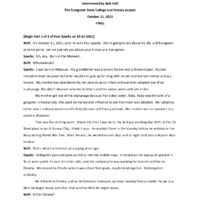Paul Sparks Oral History Interview
Item
- Identifier
- Title
- Date
- Creator
- Contributor
-
SparksPaul
-
Paul Sparks Oral History Interview
-
October 21, 2021
-
November 1, 2021
-
Paul Sparks
-
Bob Haft
Position: 282 (18 views)

